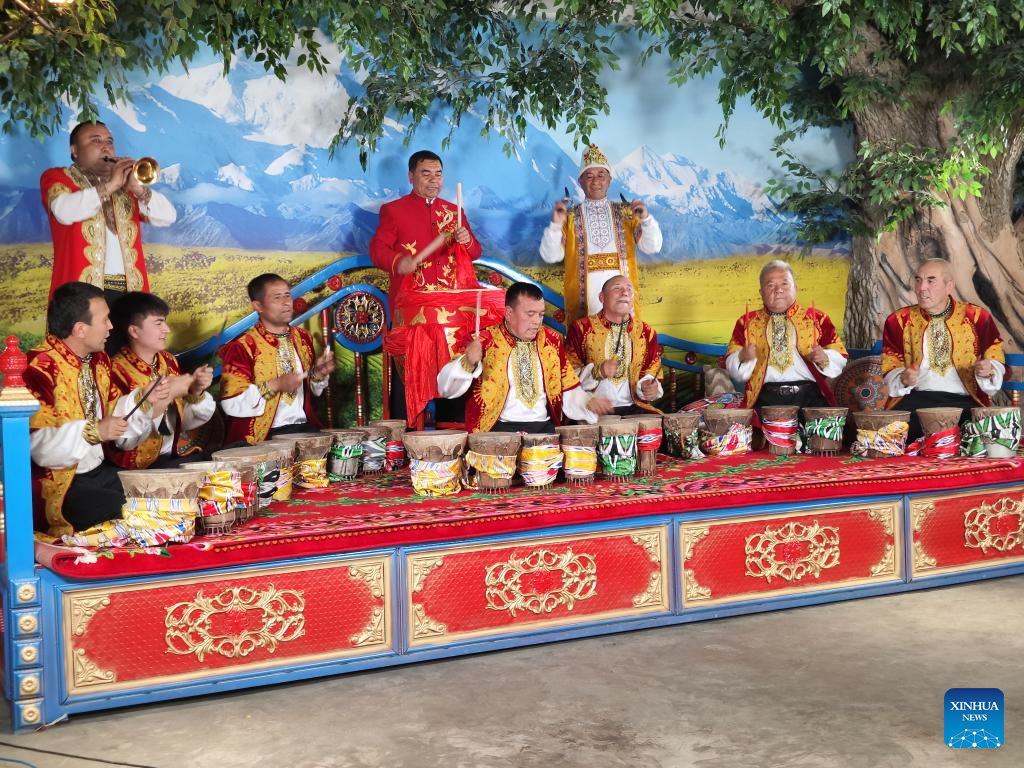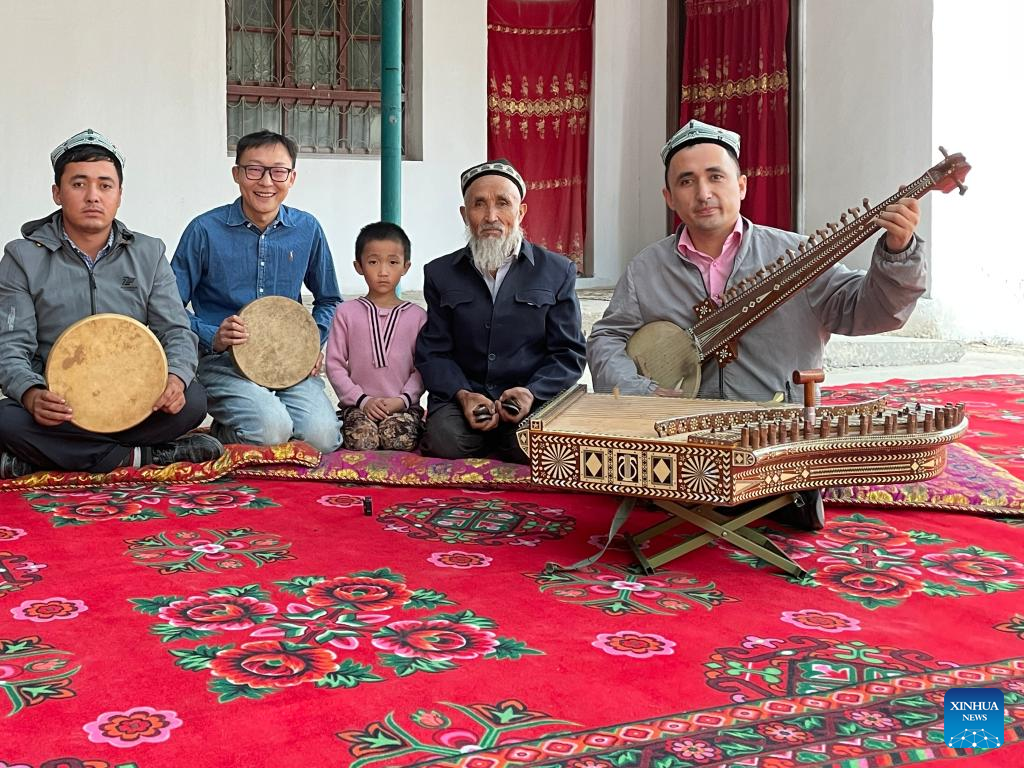Xinjiang Musician Dedicated to Documenting Intangible Cultural Heritage

Artists from Hotan Prefecture perform on a traditional heatable platform covered with a red carpet in Turpan City in northwest China's Xinjiang Uygur Autonomous Region, March 23, 2023. (Xinhua/Zhao Chenjie)
URUMQI, April 15 (Xinhua) -- On a traditional heatable platform covered with a red carpet, artists from Hotan Prefecture in northwest China's Xinjiang Uygur Autonomous Region are performing a rhythmic tune with high-pitched suona and iconic traditional Uygur nagra drums. Meanwhile, located near the platform are directional microphones, multiple cameras, and Wang Jiangjiang and his team.
Wang, 38, has been engaged in documenting and recording intangible cultural heritage in Xinjiang for 13 years. He said it was a predestined fate for him to come to the region from his hometown in Hebei Province, nearly 3,000 km away, to witness Muqam and other cultural features.
Muqam means classical music in the Uygur language. It is a traditional art of this ethnic group, integrating songs, dances and literature, and hailed as the encyclopedia of their history and social life.
Wang studied at Xi'an Conservatory of Music, and then went to Italy to learn opera performance and composition. Starting in 2009, he began collecting folk songs in China, and was attracted by Muqam the first time he saw it in the documentary "World Heritage in China."
"The first time I heard and watched this impassioned performance, I was fascinated by the unpredictable melody and revel performers. Thus, I hoped to learn more about this art," he said.
Curious about Muqam and longing for the region, Wang went to southern Xinjiang in 2010 to gather indigenous music and interview folk artists. Later he met his intimate Uygur friend -- Ershidin Tursun, a performer at the Loulan Art Troupe of Ruoqiang County.
"The first time I met him was at a performance. He was shy and did not speak much," said Tursun.
However, music became the catalyst to accelerate their strangeness into familiarity. "He sincerely hoped to integrate into our environment and learn Xinjiang music. Therefore our topics of conversation kept expanding," said Tursun, adding that Wang had studied abroad and the county had lacked people of such musical talent and experience.
"Our most memorable entertainment activity was to watch Uygur drama and movies in his small dormitory, where we placed our food and drinks on the bed," said Wang.
Gradually, he met more Uygur musicians, and joined them in work and life on and off the stage, and learned the basics of their language.
Through his deeper acquaintance with local culture, Wang became aware of a problem. He found that most of the videos of Muqam recorded group performances, rather than individual ones. Without musical scores, people only learnt the art orally and seldom could one sing all the parts of it.
"At the time, most of the Muqam artists in Xinjiang were very old, so I had the idea to 'retain' them through video, pictures and sound," said Wang.
In 2017, Wang began to document inheritors of intangible cultural heritage in Shache County in Kashgar Prefecture, using video cameras to digitize their art, and recorded 318 folk artists over a period of about six months.
"There was only one college student who helped me back then. Now we have a team and have established a studio," he said.
Starting in 2020, with the support of the regional government, Wang and his team began to re-record Muqam art in a more detailed and in-depth way. Currently, 45 varieties of Muqam and oral biographies of 77 Muqam inheritors have been completed. They have traveled to over 300 villages and towns in Xinjiang and formed a "resume" for Muqam art through videos, photos, sounds and biographies.
"Apart from Muqam, we also record other forms of intangible cultural heritage in Xinjiang," he said. He and his team have already documented the information of over 2,000 folk artists of multi-ethnic groups.
"Recording these intangible cultures in Xinjiang can provide inspiration for musicians and materials for future generations to research and spread our culture and art," he said.
His work is also displayed on his social media account. "The tidbits and finished films are shared online in the form of short videos. I hope they can make more people know about Muqam art and Xinjiang."
In recent years, Xinjiang has established 120 region-level intangible cultural heritage protection and inheritance bases, six Uygur Muqam art inheritance centers, and 10 inheritance centers for other types of art.

Wang Jiangjiang (2nd L) poses for photos with Uygur folk artists in Makit County, Kashgar Prefecture, northwest China's Xinjiang Uygur Autonomous Region, in October 2021. (Xinhua)